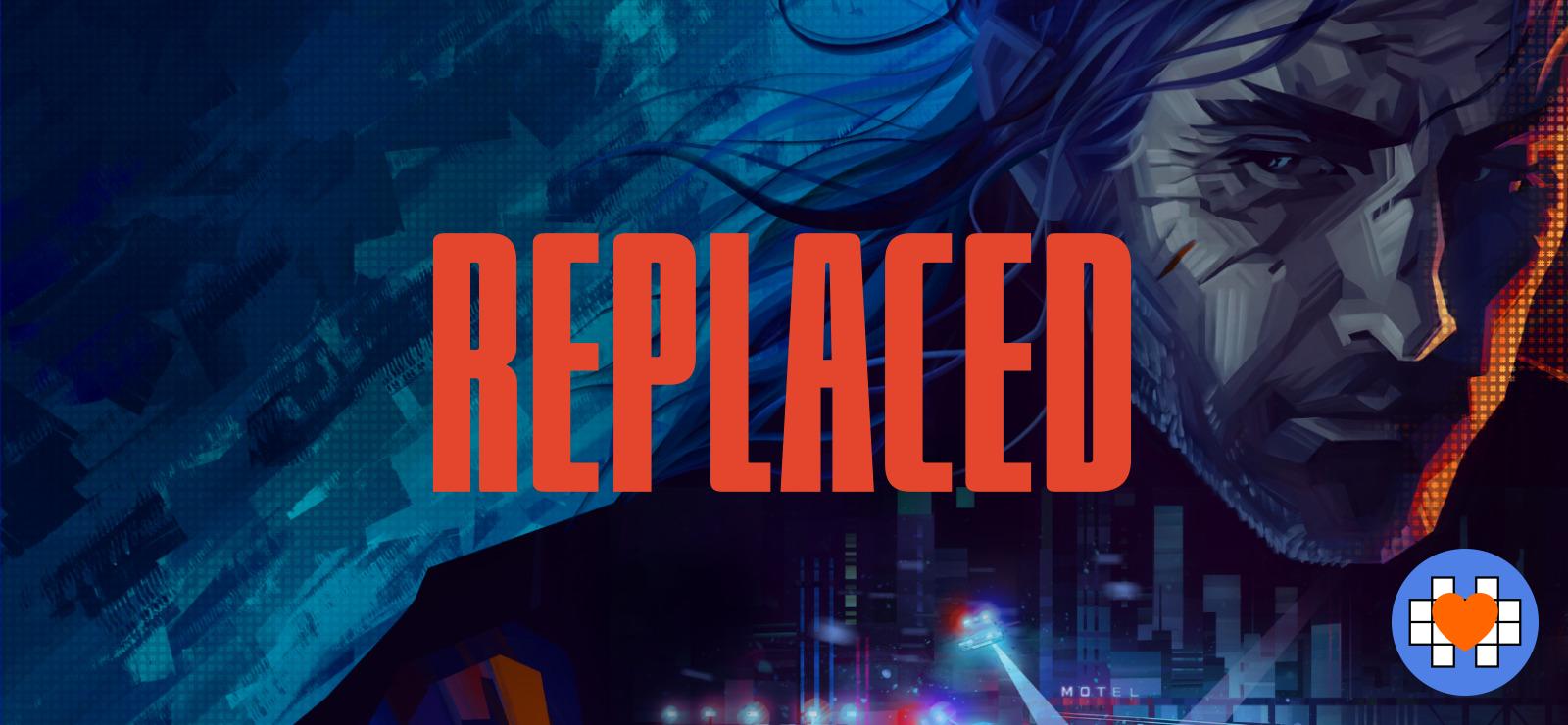Replaced, the title of the Polish independent studio, Sad Cat Studios. Coming soon for PC and Console, let’s see all the available infos

Today we’re talking about Replaced, a 2.5D retro-futuristic sci-fi action platformer. As anticipated, the game is in development at Sad Cat Studios. Postponed to release in 2024 after the growing expectations of the community that gravitates around the game. Development continues steadily to guarantee a high-quality result, which represents the gold objective for the studio which is preparing to debut with Replaced. We have an example of meticulousness in the over 500 animations for the main character, which are hand-painted and created specifically for the platformer.
The dystopian world of REPLACED
Set in an alternate 1980s America, following a catastrophic nuclear event, our journey will take one unexpected turn after another. Outlaws are the order of the day in a society that has suffered permanent damage. Corruption and greed reign supreme and it will be clear as we walk along the streets of Phoenix City. Those in power see humans and their organs as nothing more than mere currency.
In REPLACED, we play the role of R.E.A.C.H., an artificial intelligence, trapped in a human body against its will.

We will explore and uncover the mysteries in and around Phoenix-City from the perspective of AI learning to be human in a society that has taken a turn for the worse. We’ll use our platforming skills and combat reflexes to navigate a stylized 2.5D, cyberpunk-inspired world. We forge wary alliances and discover hard truths as R.E.A.C.H., as he begins to realize that everything has a price.
REPLACED’s narrative focuses on the single-player experience, with a mix of animated platforming, pixel art and free-flowing action combat.
Create the Environment for REPLACED
A complex, stylized, cyberpunk-like world in pair with a deeply compelling dystopian story that takes place in an alternate past. In fact, the world of REPLACED is made up of hundreds and thousands of meticulously detailed props. Rubbish on the streets, old dumpsters, telephone booths, lamps, mailboxes, cars, retro computers: whatever we can think of… they’ve probably included it… somewhere.
With such a level of detail and quantity of things to create, there is a need to develop an appropriate workflow. In order to create environmental assets that are highly stylized and readable as pixel art. But above all, they imitate the physical properties of real materials to fully exploit light and shadow in real time.

Much experimentation from Sad Cat Studios; many on how to maintain the defined quality of pixel art while making detailed 3D props. However, the answer was a stone’s throw: they had to do everything by hand. Every single object, every single diffuse texture, every additional map, and of course, the models themselves.
To achieve a modern look that plays well with lighting, post effects and dynamic positioning, props should also behave in a modern way. Then some thoughts arose:
“What if the player moved that crate under a streetlight?”
“And what if a lighthouse came through that window?”
“What if… you simply want to reuse the object in other lighting conditions and save yourself a sleepless night by creating another vending machine again”
To allow all these cases to look natural and beautiful, they basically drew each item a couple of times:

All of these creations create some sort of asset that takes full advantage of the game world. This while undoubtedly maintaining pixel art in the presentation. With the help of Sad Cat Studio’s rendering engineer, they created custom shaders tailored to the game world they were building. The Team has also developed guidelines for all types of materials, seasonings and color palettes.
A truly immense job that only once we are in-game will we be able to appreciate but above all they will know if it was worth it!
The Importance of Lighting in a Pixel Art Game
One of the defining characteristics of such highly stylized games is the lighting. REPLACED, is no exception, the developers are in fact using many volumetric lights to create a rich, dense and high quality atmosphere. All this using internal rendering technology, tailor-made to integrate perfectly with the game. Stratagem that no longer compromises other components in development and which allows the Team to work fluidly.

This technique allowed you to flexibly add things like:
Dust
Fog
Fog
Lightweight trees
Which contributes to lighting and cinematic composition allowing you to create the desired atmosphere.
The progress of animation
The game has come a long way in this area too: from the simple animation package of the first animated, lazy, nameless hero (later to become R.E.A.C.H.), to an actually controllable walk cycle and finally the R.E.A.C.H. that we saw in the Trailers. When tackling animation, the development team follows 3 fundamental principles:
Handcraft: All animations in the game are hand-drawn, meaning they don’t take any shortcuts when producing literally hundreds of sprites. “Maybe in the future we will use other tools and techniques, and we have tried many, but with REPLACED we really want to honor the craft.”- they commented from Sad Cat Studios

Realism: The tone of the game, the environment, and the design goals you set in the beginning are the things that naturally dictate the style of the animation. Designed to be believable, alive and beautiful, also balanced to be integrated for comfortable and responsive play. Unlike cinematic platformers of the past, where the realism of movement and technical limitations dictated a much less comfortable gameplay approach.
Impact: While removing the annoyance of past limitations, the desire was to really somehow capture this feeling of weight and impact on the action. So that the character felt like a person, rather than a free-floating block in the world.
The clouds and sky of REPLACED
It’s not the usual skybox, nor a plane or a png. Instead they are using something that only works within the post-processing volume.
“Since we rely heavily on the exact formation and composition of clouds, this system allows us to control it, introducing generation elements such as noise, thickness, smoothness, extinction, etc” – explain the Devs.
Furthermore, clouds can also cast shadows on themselves. Receive real-time illumination from the sun and the sky itself; all this is possible using a single texture as input.

How it works?
It consists of 2 main parts: a foreground layer and a background layer.
The foreground: This is the heart and is generated from the input texture, allowing you to draw any shape as a base. Then, this form is created through generative elements.
The background layer: Plays a supporting role by introducing more randomness and believability, despite being generated purely from noise.
After this deep dive in the world of REPLACED and its creation we can only applaud the skill of the Team. As well as hoping for an update on the release date soon!
We remind you that REPLACED will be available for PC and Console. It is possible to add it to the Steam Wishlist, Epic Games Store and Gog.com. It’s different for consoles which will see it available for Xbox One, Xbox Series X/S and Game Pass.
Stay with us for more updates from the world of REPLACED and in the meantime…
Good Game everybody!

